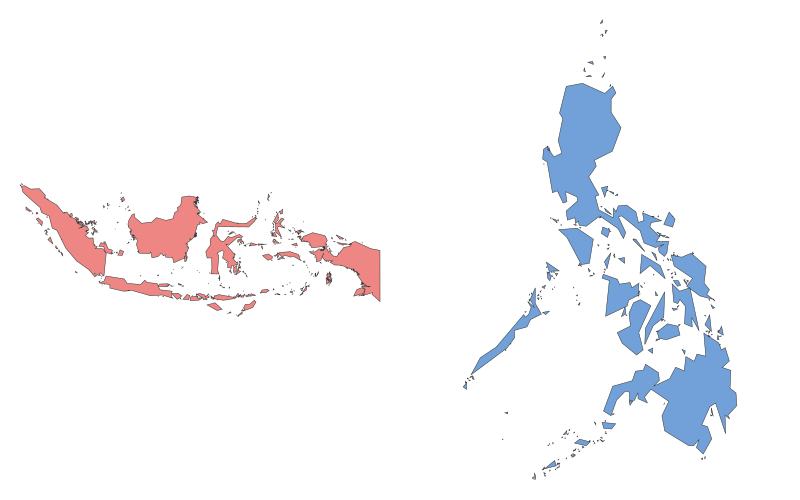Indonesia vs. Philippines: A Geographical Comparison

Comparison Table
| Category | Indonesia | Philippines |
|---|---|---|
| Location | Southeast Asia, straddling the equator | Southeast Asia, archipelago between Pacific Ocean and South China Sea |
| Size | ~1.9 million km² (world's 14th largest) | ~300,000 km² (world's 72nd largest) |
| Climate | Tropical (rainy and dry seasons) | Tropical maritime (typhoon-prone) |
| Natural Resources | Oil, gas, coal, tin, copper, gold | Nickel, copper, gold, geothermal energy |
| Urban Development | Jakarta (megacity), Bandung, Surabaya | Manila (megacity), Cebu, Davao |
| Transportation | Extensive ferry networks, limited railways | Jeepneys, tricycles, domestic flights |
Description
Indonesia
Indonesia is the world's largest archipelago, comprising over 17,000 islands. Its strategic location along major shipping routes has shaped its history as a hub of trade and cultural exchange. The country is rich in biodiversity, hosting rainforests and rare species like the Komodo dragon. Culturally, it is predominantly Muslim, with influences from Hindu-Buddhist kingdoms and Dutch colonialism. Economically, it relies on agriculture, mining, and a growing tech sector. Jakarta, its capital, faces challenges like congestion and sinking land.
Philippines
The Philippines is an archipelago of over 7,600 islands, known for its stunning beaches and coral reefs. It has a tropical climate with frequent typhoons. Historically, it was influenced by Spanish colonization (evident in Catholicism and festivals) and later by American rule. The economy is driven by remittances, outsourcing, and agriculture (e.g., coconuts, rice). Manila, the capital, is densely populated, while provinces retain rural charm. Filipino culture blends indigenous, Asian, and Western elements, with English widely spoken.
Both nations face environmental challenges like deforestation and natural disasters but are key players in ASEAN's economic growth.